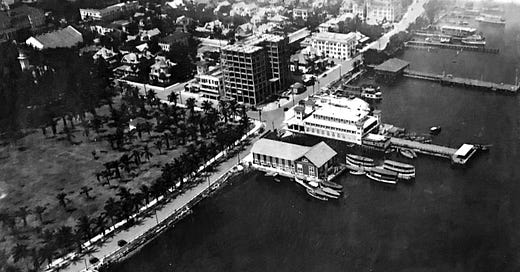Elser Pier in Downtown Miami
Elser Pier was the center of most social and business activity for seven short years when the Miami was still in its formative stage. This is the story of that very important venue in Miami's history.
Throughout its more than one hundred twenty-year history, Miami has had its share of attractions. In the second decade of the twentieth century, there was no bigger attraction than Elser Pier which became the primary venue in Miami for conventions and special events. It was also an attraction that provided residents a way to enjoy the beautiful shoreline of Biscayne Bay in downtown Miami.
While it wasn’t around for a long time, it became an unforgettable place. Elser Pier was the venue to witness and learn about the technological advances of its era. It brought the world to South Florida and provided a destination to experience what was unique and interesting about Miami in the early 1900s.
Keep reading with a 7-day free trial
Subscribe to Miami History to keep reading this post and get 7 days of free access to the full post archives.




